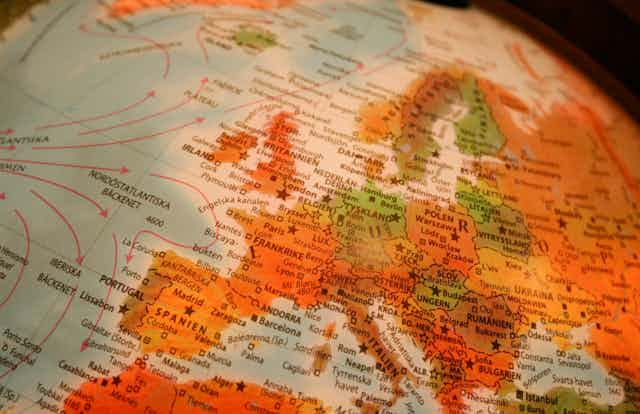William Nordhaus was awarded the 2018 Nobel Prize in Economics for “integrating climate change into long-run macroeconomic analysis”.
This implies that he worked out what global heating means for our economy, given what climate scientists say will happen to our planet.
But Nordhaus’s predictions of what global heating will cost the earth are dangerously at odds with the science.
In his Nobel Prize lecture, Nordhaus described a 4°C increase in global average temperature as “optimal” — that is, the point at which the costs and benefits of mitigating climate change are balanced.
In a subsequent academic paper based on this lecture, he stated that “damages are estimated to be 2 percent of output at a 3°C global warming and 8 percent of output with 6°C warming”. This is a trivial level of damage, equivalent for the 6°C warming case to a fall in the rate of economic growth over the next century of less than 0.1% per year.
Nordhaus’s conclusions are based in part on the simple but wayward assumption that the weak relationship between temperature and GDP within the US today can be used to assume how future global temperature rises will affect the economy.
For example, the coldest state in mainland US is North Dakota, with an average temperature of 4.9°C and a high GDP per head – US$67,000 in 2018. Slightly warmer states such as New York (9.0°C, US$73,000) tend to have higher GDPs, while the hottest state – Florida, at 22.1°C – has a lower GDP (US$43,000). This implies that past a certain point, higher temperatures reduce GDP, but the relationship is very weak: huge changes in temperature result in relatively small changes in income.
If it were true that this weak relationship could be applied to global temperature change, then global warming would indeed be nothing to worry about. However, the relationship between temperature and GDP within one country today tells you absolutely nothing about how the world will change if global temperatures rise by 10°C.
This can be hard to grasp, since we’re talking about the truly unknown – humanity has never experienced global temperatures that high. But we can assess how unrealistic Nordhaus’s work is because it predicts exactly the same damages for a fall in global temperature as it does for a rise. It predicts, for example, that both a 4°C rise and a 4°C fall in temperature would reduce global GDP by 3.6%.
The average global temperature during the last Ice Age was 4°C cooler than today. There’s no way we can accurately predict what GDP would be in such a cool world today, but we know that most of Europe north of Berlin, and of America north of New York, would be under a kilometre of ice. To argue that this would cut GDP by just 3.6% is simply absurd.
Trillions at stake
Indeed, estimates from climate scientists based on relatively conservative figures from the IPCC suggest that limiting global warming to 1.5C instead of 2C are likely to save trillions of dollars by 2100, even accounting for the costs of increased action. Uncertainties in climate modelling mean that this analysis is by no means definite. But given the distinct possibility that 2°C of warming could set off a cascade of “tipping points” that cause the planet to irreversibly heat to catastrophic temperatures, can we afford to play with fire?

The risk to organised human civilisation of sending Earth into a nightmare “hothouse” state should be sufficient alone to justify the higher cost of a decarbonisation timescale compatible with 1.5°C. Even if letting warming reach 2°C or above turned out to be more cost-effective, the saved money is not worth the moral costs of species extinctions, habitat destruction, and forcing climate refugees from their homes.
Read more: Hothouse Earth: here's what the science actually does – and doesn't – say
The faith that William Nordhaus and others have in the “incredible adaptability of human economies” is almost admirable in a sense. But that adaptability has occurred in a remarkably stable climate where global temperatures have fluctuated by 1°C below or above the average for the last 10,000 years. If that climate stability breaks down, then human adaptability will almost certainly break down with it.
Many climate scientists are now calling for the focus on economy efficiency and incremental change that economists have taken to global warming to be abandoned. When supposedly respected experts disagree so fundamentally over an issue, it would be understandable for the public to switch off. But in this case, such a reaction would be wildly dangerous.
Just as energy companies have been accused of paralysing the political response to climate change, the trivialising of the dangers of climate breakdown by mainstream economists has paralysed bold and timely action on climate breakdown for almost 50 years.
In that time, humanity’s population has doubled, and the average amount each person consumes has more than doubled. If we don’t challenge the naïve assurances of economists that all will continue to be well, the “human economies” they believed they were defending will tumble just as fast.


